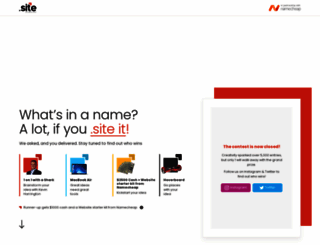.Site Domains: Submit your idea and win amazing prizes!
Page Load Speed
1.1 sec in total
First Response
98 ms
Resources Loaded
799 ms
Page Rendered
175 ms

About Website
Visit start.site now to see the best up-to-date Start content and also check out these interesting facts you probably never knew about start.site
Have an interesting idea? Share it with us & stand a chance to win a 1-1 with a Shark, a Macbook Air, & other cool prizes. Bring your idea to life on .site!
Visit start.siteKey Findings
We analyzed Start.site page load time and found that the first response time was 98 ms and then it took 974 ms to load all DOM resources and completely render a web page. This is quite a good result, as only 20% of websites can load faster.